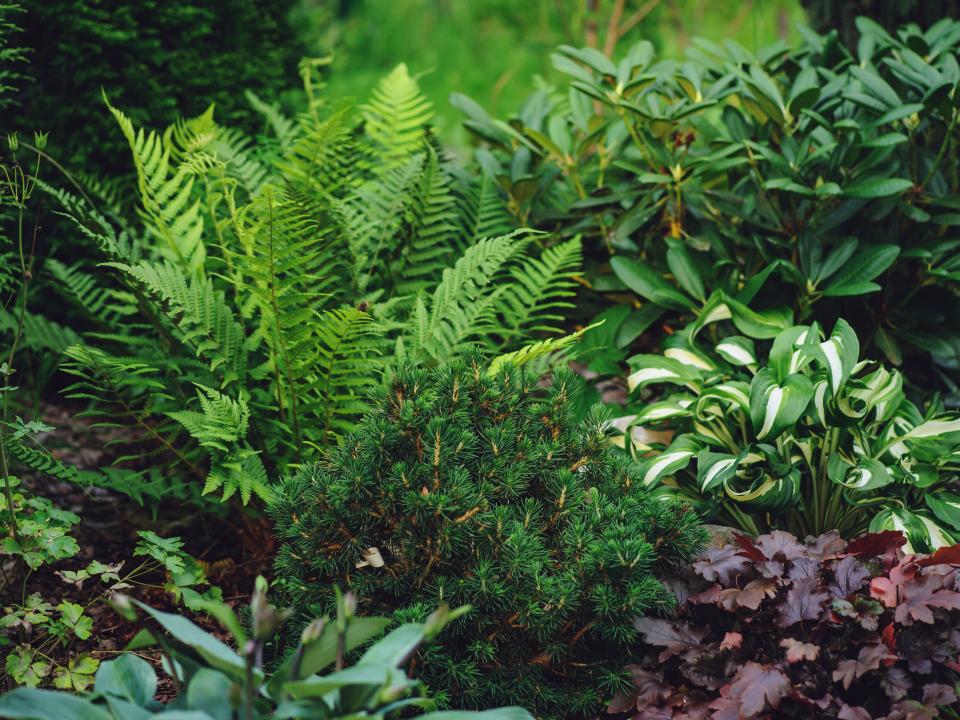HOW TO CHOOSE PLANTS FOR A SHADY GARDEN
However much light your outdoor space gets, you'll want to be able to enjoy it all year round. That's why it's smart to consider different flowering times and different plant types when choosing your plants. You should aim for a mix between spring, summer, autumn and winter flowering plants, evergreens and evergreen ground cover.
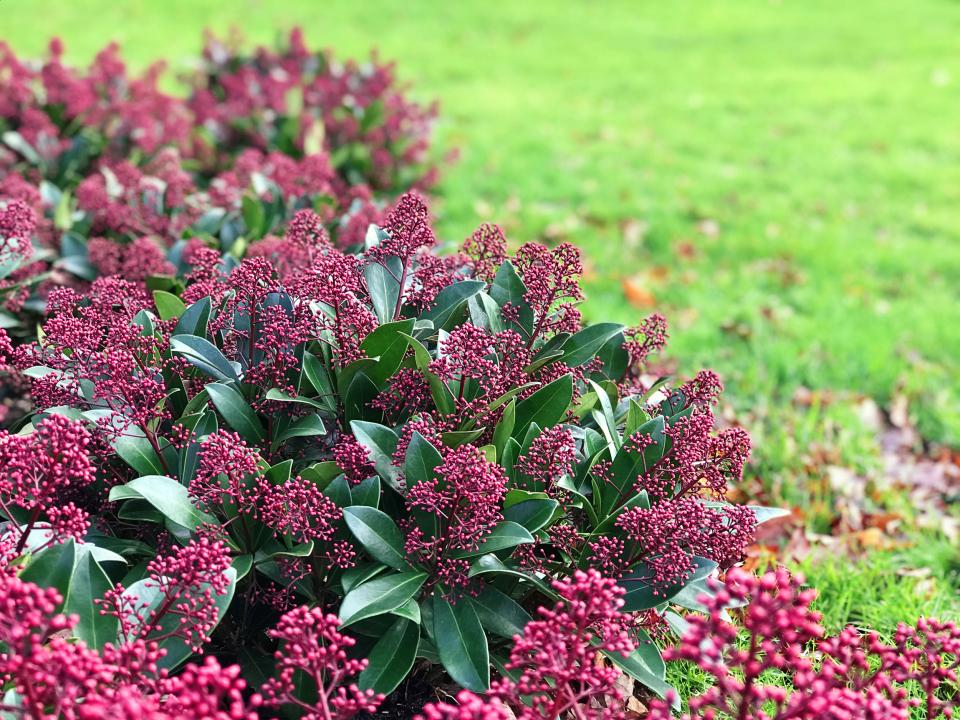
Skimmia
Evergreen Skimmia can be enjoyed year-round. In September, many red, white or purple buds (or berries) appear on the plant that remain beautiful all winter. In April or May, wonderfully fragrant, white-pink flowers bloom, which bees love. In summer, enjoy the gorgeous, leathery, green leaves.
Tip: Skimmia doesn't like to have its roots be too wet and therefore likes to be positioned next to trees, which absorb moisture from the soil. If you plant Skimmia in a pot, make sure it has good drainage.
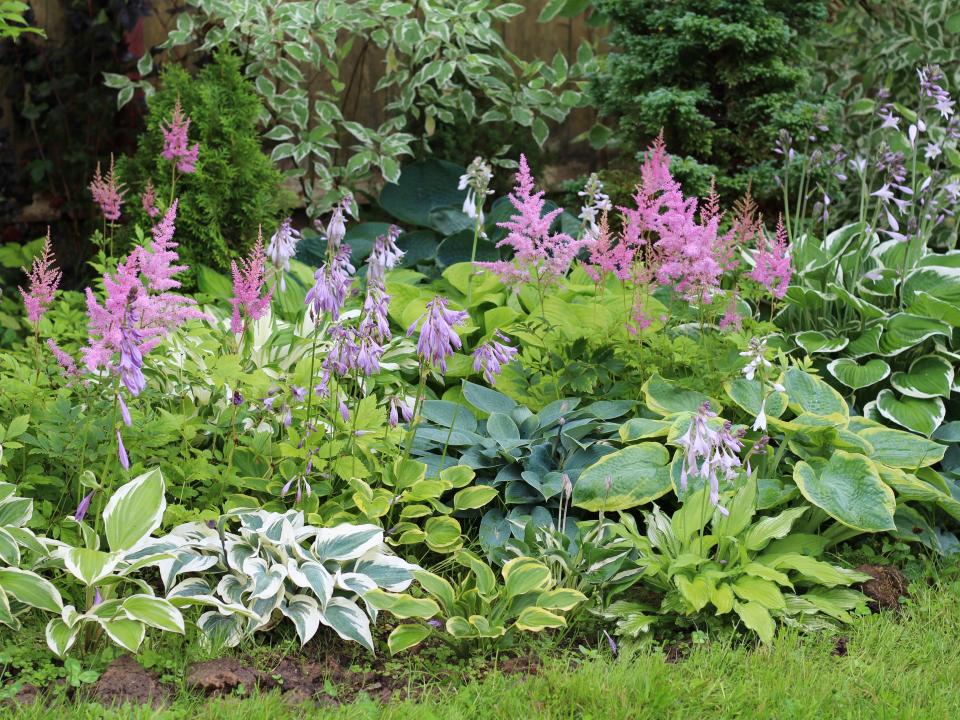
Hosta
Hosta is a popular shade-loving plant known for its many varieties and its beautiful, green, heart-shaped leaves. Some varieties have leaves with yellow or white edges. Hostas are hardy and flower between June and October, depending on the variety. The flowers are often white, pink or purple in colour and grow on upright stems.
Tip: Snails love Hostas, so protect your plants properly using these natural pest control tips.
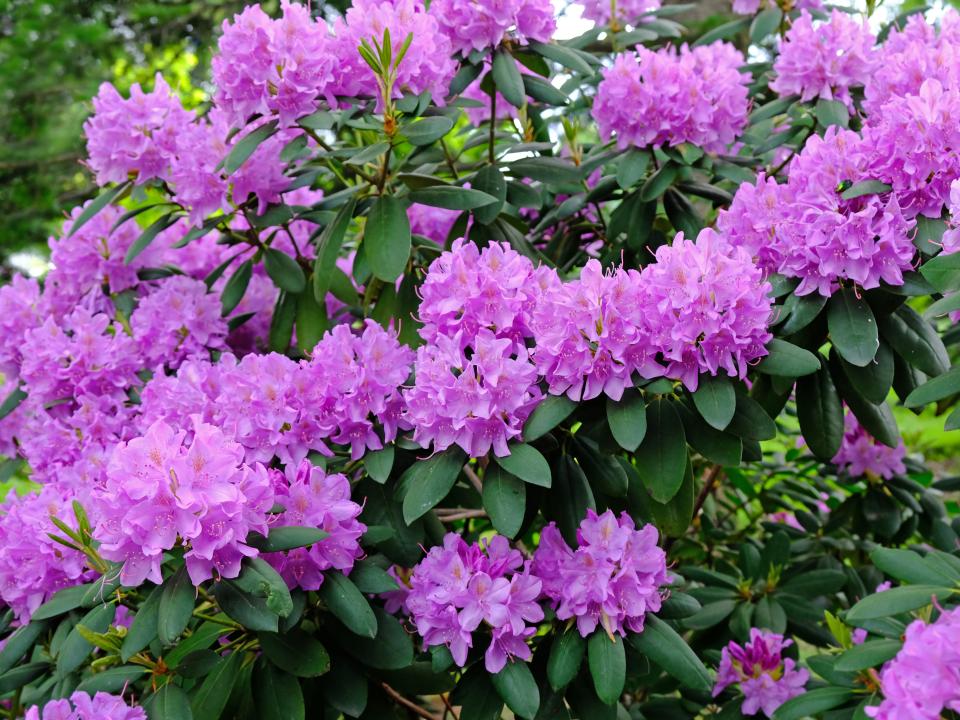
RHODODENDRON
Reliable evergreen Rhododendron does well in the shade and produces beautiful flowers. With its beautiful pink, purple, orange, red, yellow or white blooms, Rhododendron steals the show in spring. The rest of the year you can enjoy its beautiful green colouring.
Tip: Rhododendron usually grows about 1.5-2 metres high and is evergreen, making this shrub very suitable to be used a hedge.
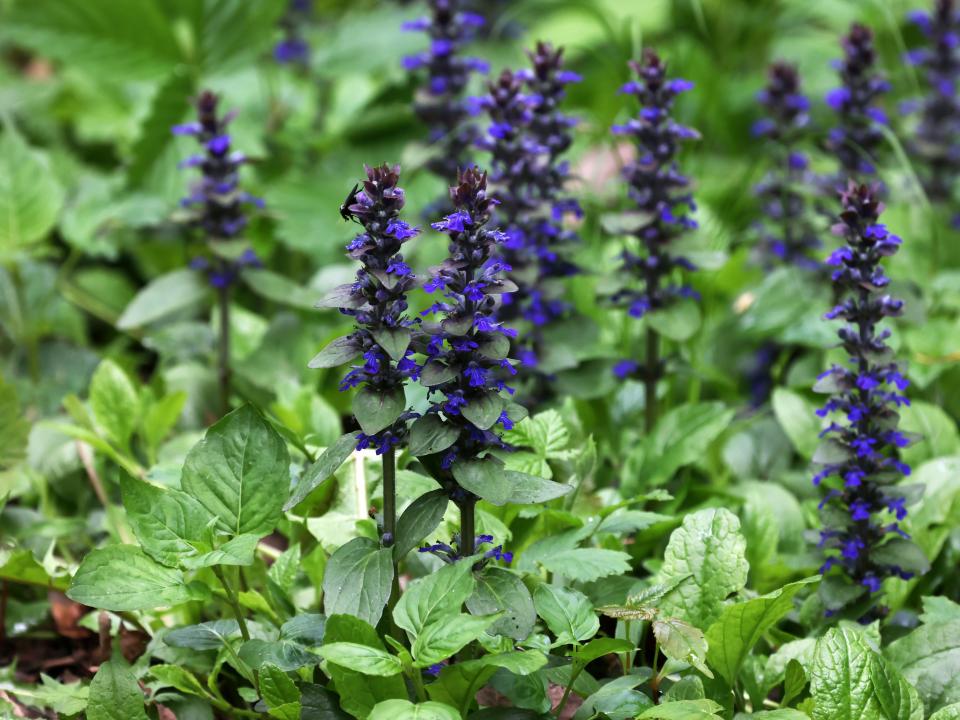
CREEPING SAGE
Creeping sage is a hardy evergreen ground cover. The plant produces small, purple-blue flowers which bloom on an erect stem in May and June. Its leaves are green-purple and the plant stays low to the ground throughout its lifetime (about 15-20 centimetres high). Butterflies and bees also love it!
Tip: creeping sage does very well in hanging containers as well as being used as shade-loving ground cover.
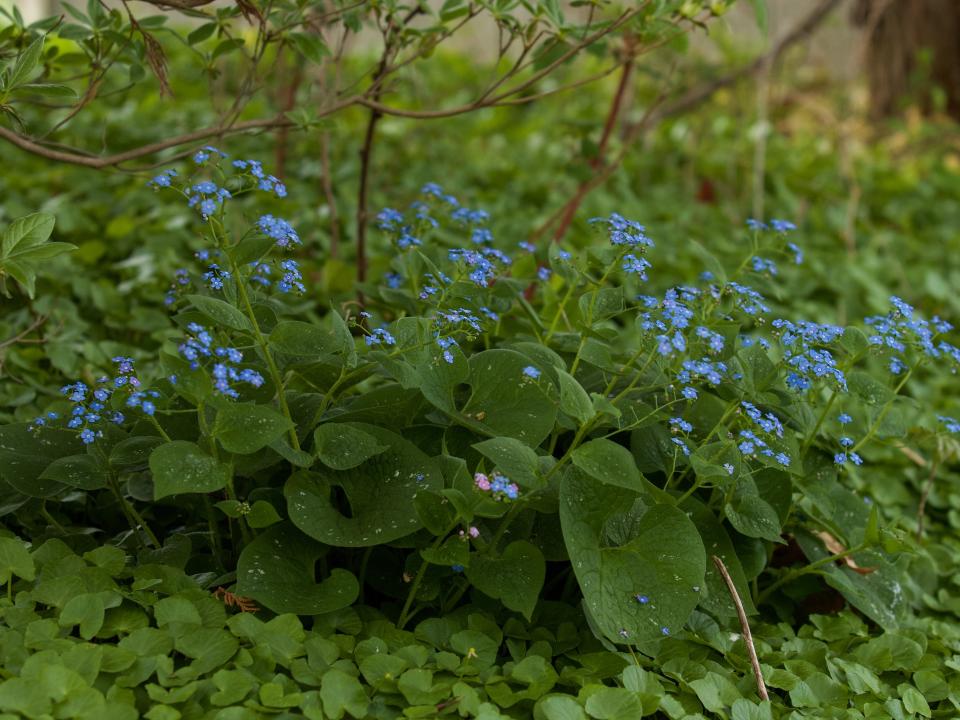
FORGET-ME-NOT
With its lovely flowers and heart-shaped leaves, you can't forget forget-me-not while populating your shady garden. The flowers bloom from April to June on tall stems above the leaves and are white, pink or blue in colour. Forget-me-not is hardy, but not evergreen. Every spring it grows and blooms again!
Tip: Forget-me-nots are strong and self-seed easily. They grow perfectly under a tree and are suitable to use as ground cover in a shady border.
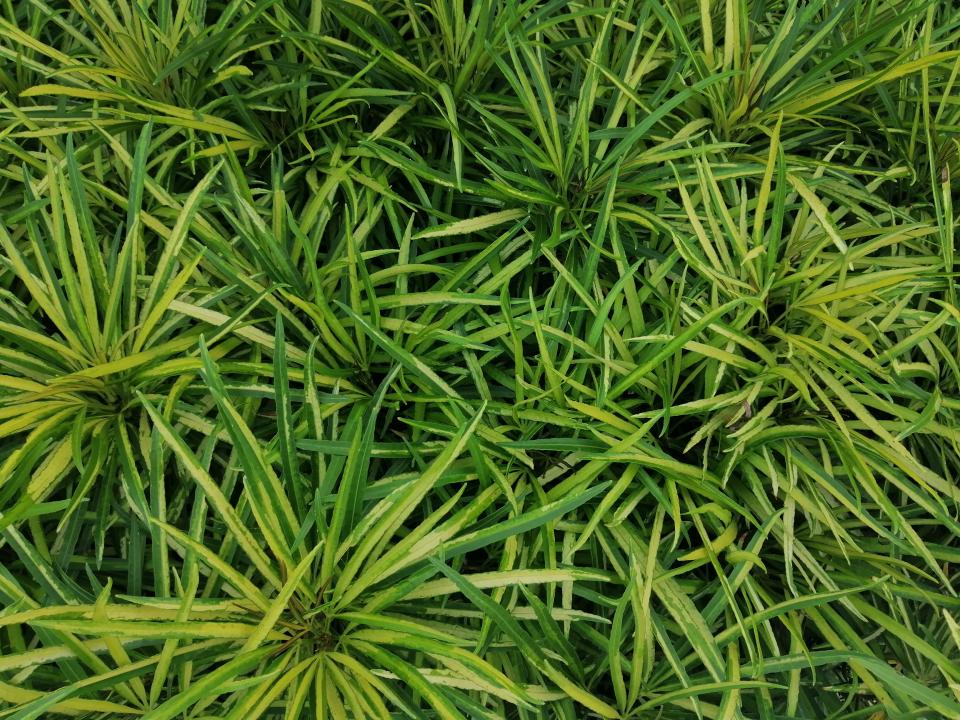
JAPANESE SEDGE
Looking for an ornamental grass for a shade-filled area? Look no further! Japanese sedge, also known as Carex morrowii, is an evergreen, hardy ornamental grass with dark green, glossy leaves. In spring (April-May), sedge flowers and stems with yellow-brown spikes appear on the grass. Japanese sedge grows about 40 centimetres high and is not proliferate.
Tip: Japanese sedge does well alone, but is also very attractive as part of groups of plants. An entire border or planter containing Japanese sedge adds a calming, green touch to any garden.
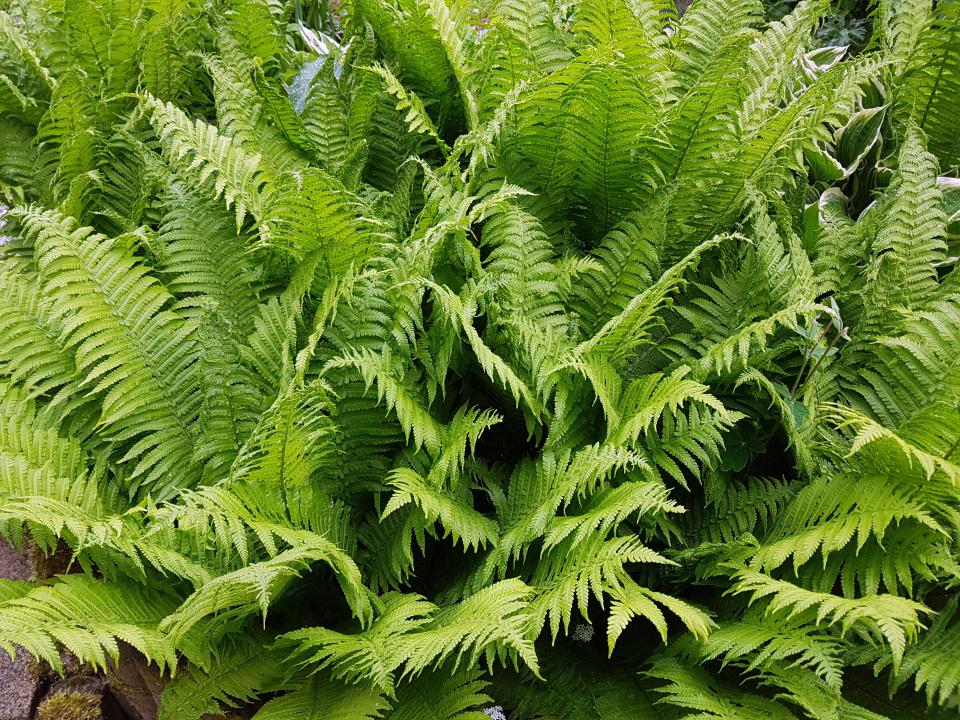
GARDEN FERNS
With their fresh look and beautiful form, garden ferns are very popular evergreen shade plants. Their elegant leaves usually unfurl in spring, after which you can enjoy the beautiful leaf colour and shape all year round. Garden ferns combine perfectly with shade-loving plants such as hosta and Columbine.
Tip: garden ferns like moist soil. During hot, dry period in summer give ferns plenty of water.
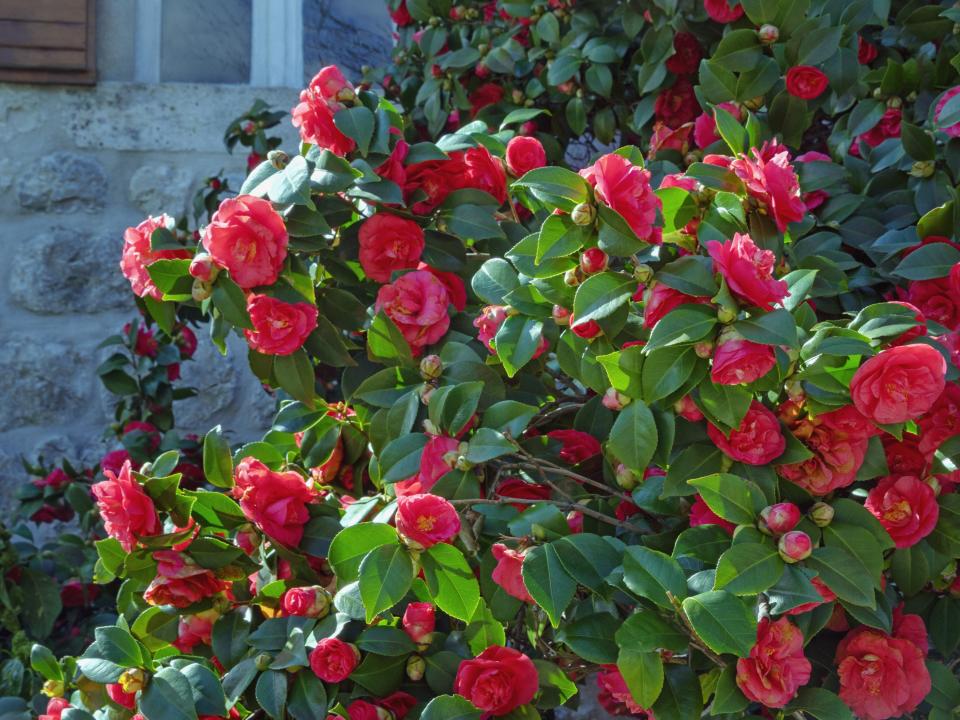
Camellia
Want to add colour to your garden during winter? Camellia, or Japanese rose, is an evergreen shrub that blooms during the coldest months of the year. The brilliant, rose-like flowers (often pink, red or white) appear in winter as a tropical surprise. The rest of the year you can enjoy the dark green, glossy leaves. The height of Camellias varies by variety.
Tip: Camellia is moderately hardy. In severe frost and/or very cold winds, cover it with a breathable material to keep it warm.
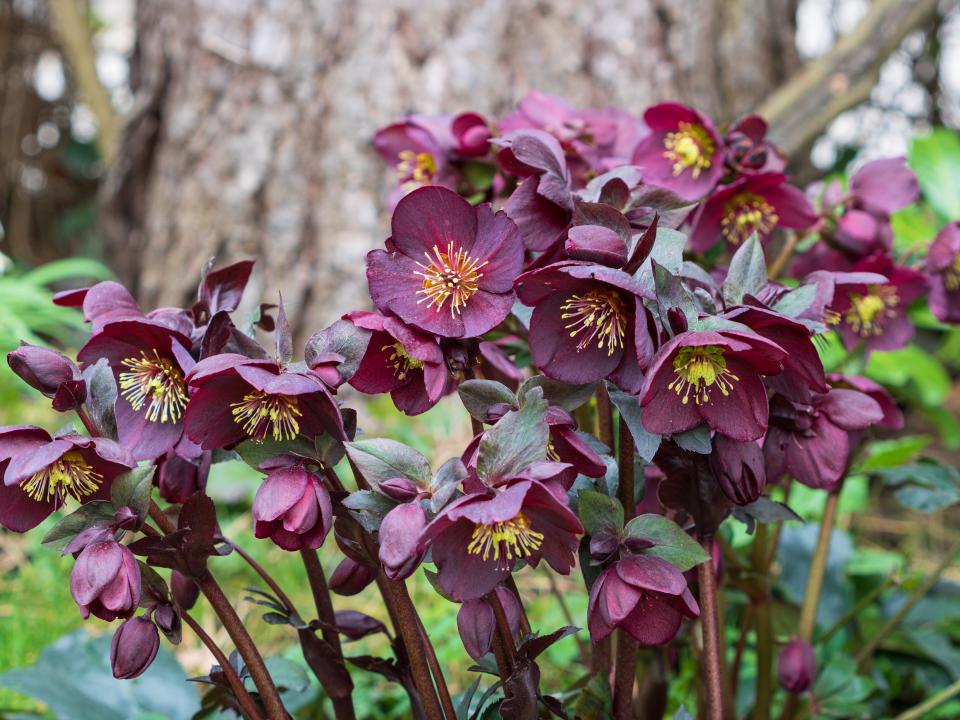
Hellebore
Another beautiful winter bloomer is Hellebore, also known as Christmas rose. This evergreen, hardy plant has a long flowering period, stretching from Christmas to April. The graceful flowers have a distinctive centre and are white, green, pink or purple in colour, depending on the variety. Hellebore likes a sheltered spot, so preferably you should plant this winter flowering plant out of the wind.
Tip: Hellebore thrives best in well-drained, nutrient-rich soil. Ensure good drainage and add organic compost and lime.
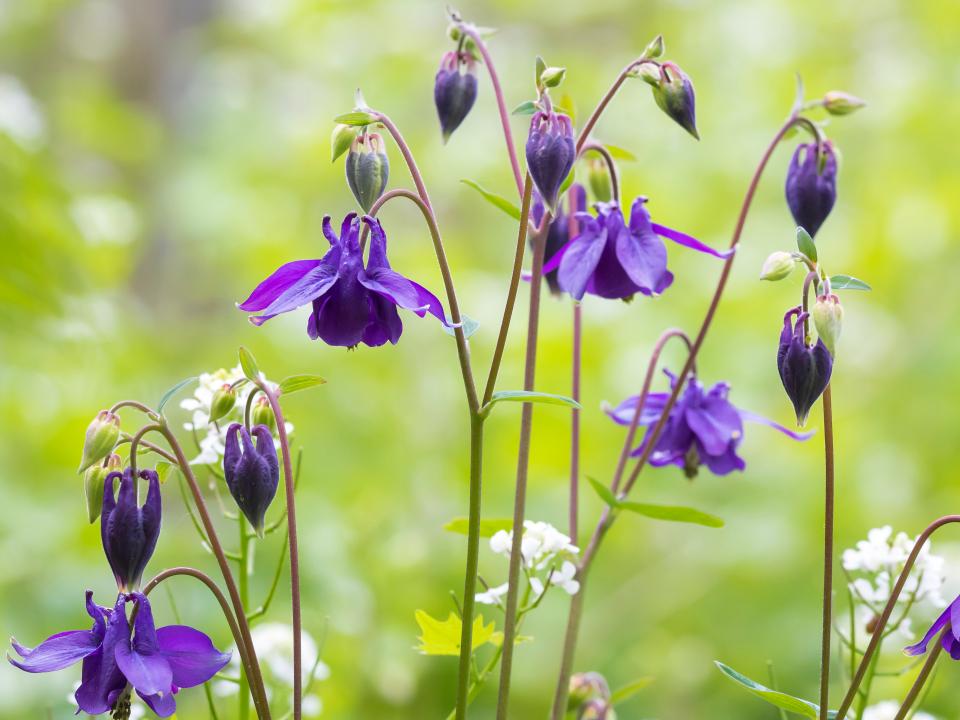
COLUMBINE
Columbine is a hardy, non-evergreen plant that blooms richly from spring to summer (April-July). The dainty, cupped flowers are often blue-purple, red, white or pink and spread easily. With columbine in your garden you'll be very popular with the local bees and butterflies!
Tip: Columbine originates from mountainous areas and thus makes an excellent addition to rock gardens and awkward gaps that need filling.
is your garden truly shady, or is there just shade in your garden?
A true shady garden gets less than two hours of direct sunlight per day. A lightly shaded garden gets around two-three hours of direct sunlight per day. When we say half-shady or half-sun, that means a garden that gets around four hours of sunlight a day.
TIPS FOR PLANTS IN A SHADY GARDEN
Plants that don't get much sunlight can always use some extra care. Check out the tips below:
- Improve your soil before planting shade-loving plants. Use humus-rich material (such as compost and leaf mould) to keep dry soil moist so that nutrients are better absorbed.
- After planting garden plants, cover the soil with a layer of organic compost around the base of the plant (such as compost, wood chips or bark).
- Want to increase the amount of light in your garden? Then paint or stain a fence or wall in a light colour to reflect sunlight.
DID YOU KNOW...
- Most herbs like sun, but herbs such as parsley, chives, lemon balm, mint and chervil do well in the shade.
- In general, shade-loving plants have large, green leaves. This allows them to catch raindrops and sun rays better. Plants that like heat tend to have smaller and thicker leaves. A useful reminder when you are in the garden centre looking for suitable garden plants!
MORE INFORMATION
Are you curious to discover more about plants that do well in the shade, semi-shade or sun? Check out this article on potted plants for any kind of balcony or garden. Follow us on Instagram and Facebook for your daily dose of inspiration.


